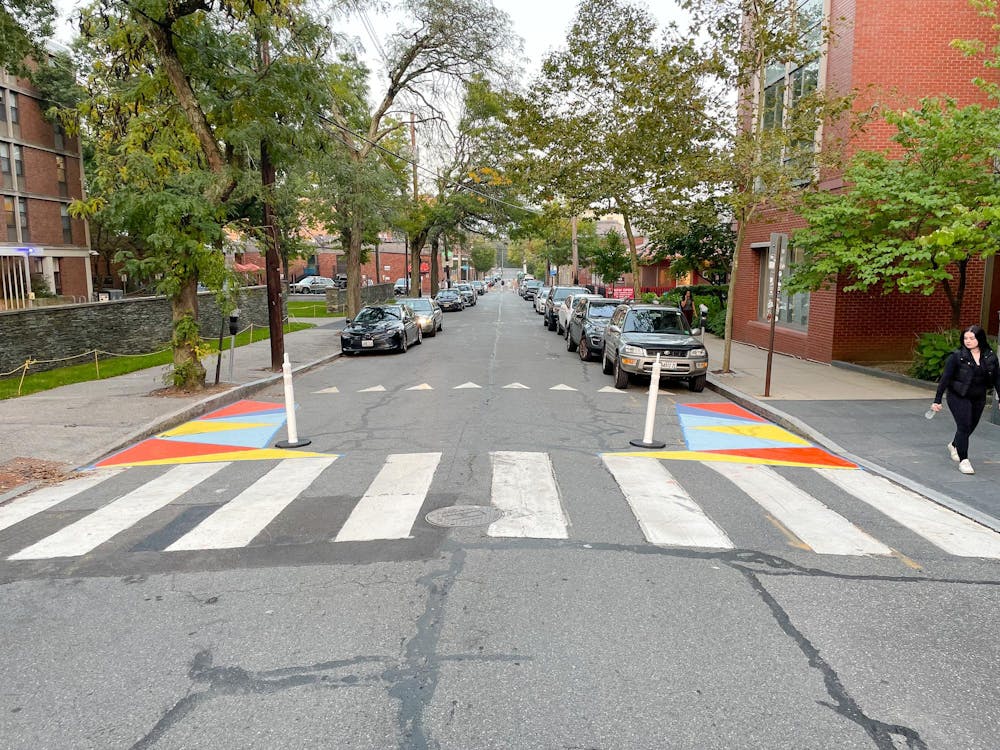Last month, the Department of Public Safety launched a new initiative that aims to “enhance pedestrian safety and decrease accidents” at campus intersections, according to a Sept. 19 Today@Brown announcement.
The initiative consists of three week-long phases that began Sept. 21 and will continue through mid-October, wrote DPS Director of Advocacy, Engagement and Communications Quiana Young in an email to The Herald.
Young explained that the first phase involves observing and documenting traffic violations in real time. In the second phase, DPS “will engage with motorists and pedestrians to address violations in real time” while also providing informational materials on driving and pedestrian safety.
During the final phase, DPS will “continue to educate and carry out enforcement as necessary for any observed traffic violations,” Young wrote.
The initiative aims to “implement enforcement as needed and increase community members’ situational awareness of their surroundings,” the announcement reads.
According to the announcement, DPS “reviewed data provided by the Providence Police Department about areas with patterns of pedestrian and motor vehicle accidents” and was “monitoring those intersections” when making plans for the initiative.
Young added that the new program was partially motivated by community members expressing concerns about intersections “where they have witnessed near-accidents and areas where pedestrians are often distracted.” In 2022, there were 42 collisions on campus, according to Young. In six of these, a pedestrian was struck.
Moving forward, Young wrote that DPS plans to review the data obtained from the initiative, assess its impact on pedestrian safety and evolve the program accordingly.
But some student groups argued that pedestrian safety should be emphasized through enhanced urban planning by the University as a whole, not stricter law enforcement programs.
“Enforcement isn’t necessarily the way to prevent pedestrian injuries and interactions with motor vehicles,” said Zane Walker ’26, co-president of the Brown Pedestrianization Initiative, a student group that advocates for pedestrian-friendly spaces around campus. “The best way to do that is changing the design of a street … you can have very high volume streets that don’t cause any danger to pedestrians.”
“The most effective ways to keep pedestrians safe are things that are made of concrete and things that are made of metal,” said Noah Howard ’25, a senior leader at the Brown Urban Mobility Project.
Howard noted that DPS’s newest initiative resembles past University campaigns that were ineffectively built around building awareness rather than “things that you install on the road and ways that you change the layout of the road.”
Earlier this year, BUMP received a Rhode Island Streets Transformation project mini-grant — funded by the Rhode Island Department of Health, Grow Smart Rhode Island and the Providence Streets Coalition — to improve the visibility of pedestrian crossings using the “daylighting” tactic.
BUMP has added vibrant colored paint to sidewalks around campus to discourage cars from parking within 20 feet of a crosswalk at an intersection, which Rhode Island law currently prohibits. The group has completed four daylighting projects along intersections on Brown Street, Angell Street, Hope Street and Meeting Street, Howard told The Herald.
The Brown Pedestrianization Initiative is also working to pedestrianize streets around College Hill. The group’s primary goal is to pedestrianize the intersection of Brown and Benevolent Streets, which were given to the University in a memorandum of agreement signed with the city in 2012.
The group, according to Walker, “found plans made by a set of architects to turn these streets into pedestrian streets” and decided to approach the current administration about going forward with the project. In meetings with administrators, the group “got a clear sense that there were no essential issues with the project and that it could move forward if extensive community interest was shown,” Walker wrote in a message to The Herald.
As a result, BPI has started a petition and tabled on the Main Green to promote and build community support around the project, Walker said.
In an email to The Herald, University Spokesperson Brian Clark wrote that the University has “no current plans to close Brown or Benevolent Streets to vehicle traffic. This idea was studied after the blocks were conveyed to Brown in 2012, but there was no recommendation to proceed.”
“As a part of effective overall planning for our physical campus, we undertake studies and … gather data,” he wrote. “This was a possibility explored in a preliminary way but not an effort that moved forward into an implementation phase.”
Jennifer Shim was a University News editor at The Herald.





